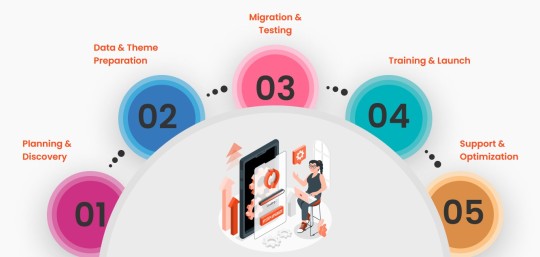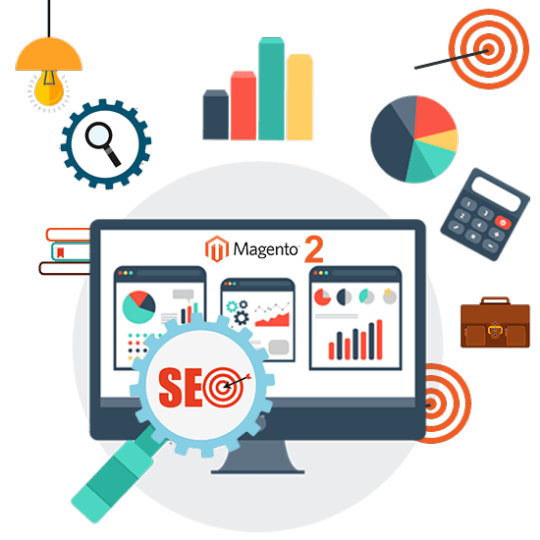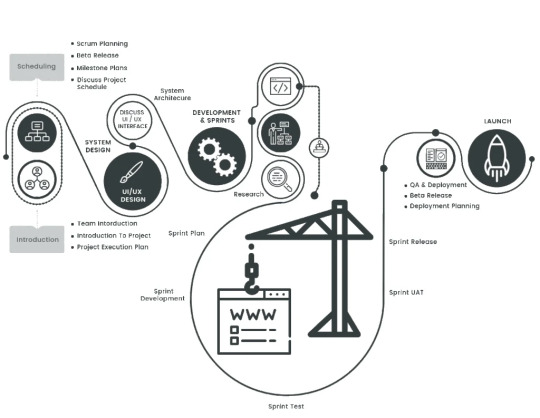#migrate to magento
Explore tagged Tumblr posts
Text
How to Migrate a Store from Shopify to Magento?
Migration from Shopify to Magento is a huge leap for your business, offering it more flexibility, scalability, and advanced features. Though this might seem daunting, having a clear roadmap for making this transition will ease the process. The following is a step-by-step guide to help in successfully migrating:
1. Understand Why You’re Migrating
First of all, before one dives in, understand why Magento is a destination point. Yes, Shopify was perfect for simplicity and ease, but Magento means advanced personalization, better scalability, and robust features. If your current platform starts to limit growth, your Magento 2 Migration will be the cool thing to do.
2. Plan and Prepare Your Data
Start by auditing your Shopify store. After auditing is completed, the Shopify merchant may need to make a note of data to migrate, which would involve details related to a product, customers, orders, and the site's content. Clean up your data-remove all outdated and duplicate entries, to keep data from becoming a disaster later on. In that way, everything will go just smoothly when migrated, and the shop could be arranged more organizedly at Magento.
3. Set Up Your Magento Store
Install Magento on a decent hosting platform or take the help of a hosting service dedicated to Magento. After that, configure some basic settings such as tax rules, currencies, and store language. Choose a theme for Magento that will represent your brand identity and customize it for seamless user experience.
4. Export Data from Shopify
Shopify provides an export facility of data into CSV format. In your Shopify admin, go to the export section and download all the required files: products, orders, customer records, etc. Back up your Shopify store to ensure you will not lose any data while migrating.

5. Data Import via Migration Tools
Magento also allows for imports with some tools, which ease the migration of data. You can use extensions for such migrations, like Cart2Cart or LitExtension, which allow automated transfers. This is because the tools will map data fields between Shopify and Magento to reduce human-induced errors.
6. Test Your Magento Store
Perform a full test of your fresh Magento store before going to production. Verify that every piece of data has migrated correctly and all product descriptions, image captions, and customer details are correct. Ensure your payment gateways, shipping methods, and checkouts work flawlessly.
7. Optimize for Performance
Magento offers advanced caching, scalability, and mobile-friendly features. Set these up to enhance the speed of your site and the users' experience. Install SEO extensions to maintain or improve your search rankings post-migration.
8. Launch Your Store
When everything is tested and optimized, switch your domain to Magento. Keep your customers informed about the migration process, emphasizing the benefits of the new platform, whether it be a better shopping experience or exclusive features.
9. Monitor and Improve
After going live, monitor your store's performance and user feedback. Address any issues quickly and continue optimizing your Magento store to align with your business goals.
Migration to Magento can be rather labor-intensive and take a long time, but the payoff in terms of customization, performance, and scalability is there. If you plan properly, this transition will lay a foundation for your business's success in the long run.
For More information, please visit: https://mageleven.com/magento-migration-services
4 notes
·
View notes
Text
Which is the best way to Migrate product data in E-commerce Websites?
Ecommerce websites have been developing every year to push the website's growth and higher product sales. It can be a complex process to migrate product data on the eCommerce website as it takes lots of time and proper planning. However, it is important to switch the data to different E-commerce platform as in B2B sales; it is very necessary to return the sales of products. There can be multiple reasons why your current E-commerce website is not functioning properly, so you need another new platform to migrate product data.
Therefore, transferring data to another eCommerce website is not a simple process. You need to consider some of the important steps to help you migrate product data information and raise the overall growth of the website.

What do you understand about E-commerce Migration?
When your website or domain is not functioning properly? When you feel your site is taking too long to load any product or switch to any category. That means it's time to say goodbye to your ecommerce website and create a new stable E-Commerce website.
Transferring your previous website's data to a new E-commerce website is called E-Commerce migration. It completely depends on the owner if they want to transfer complete or personalized data to a new website. It is also helpful that you can cut off that item from the list if you have bad sales of any product on a previous website. It reduces your bad reviews, and you can focus on the most popular product on the website.
Measure to consider while E-commerce store migrating Data.
There is a list of important and necessary measures to consider while migrating data.
● Analyzing Problems with older e-commerce Websites.
Identifying the problem you are facing in the old ecommerce website is necessary so it won't carry on to the new eCommerce domain. Also, make an analyzing list where you can mark the product's overall sales and growth in the past few years. It will help you target your new website more on products with good sales and opt out of good customer reviews.
If your old ecommerce website is having too much trouble loading or having multiple errors, then you should not migrate ecommerce product data directly. In this process, you can nullify the errors and drawbacks of your older website.
● Ecommerce Migration Tools
Many ecommerce migration tools nowadays available and can help you migrate your data quickly without the hassle of work. When you utilize any migration tool to transfer data to an eCommerce website, you should consider some factors before shifting your product.
Migration tools allow users to select multiple products and shift to the new website. Therefore you need to identify if there is any data which is not valid for the new website. You should not consider migrating it to the new domain. Ecommerce Migration tools are useful, but it would be great to customize your requirement and migrate particular data to the new website.
● Terminating Errors
When migrating your data to the new eCommerce website, you should consider checking any relevant information regarding the product. It is necessary to terminate all the duplicate and unnecessary product data information that is slowing the speed of websites.
Additionally, you can select the necessary data to migrate and add new products to the website, improving the customer experience on your platform.
● Staging the Live Site
Site staging allows the user to compare the process working on the live site. It is helpful in various cases to make any changes before uploading your website globally. By Staging the site, you can also fix multiple errors that might occur during site performance.
Although it is not a very big process, it is crucial because it reduces the possibility of getting into trouble when you launch your website.
● Data Mapping
Data Mapping is the process that involves the comparison between the two websites where users can check that all the products are migrated to the proper location. It is useful to ensure that all the products are completely migrated to your new platform and that there is no misplacing of any information and product.
● Final Analysis
Once the ecommerce migration process is complete, it would be best to check that all the data is transferred properly. Also, ensure that if there is any error or leg in the new E-commerce website, you can fix it in further process. This is a major step as it reduces the negative impact of the website on the customers and increases the overall quality of the domain.
Why is Migration data necessary?
Due to multiple factors, it becomes important to migrate the data from older e-commerce websites to new websites. Sometimes the website is not properly working and takes too much time while loading. It decreases the customer's interest in the website as all they get is a loading page.
Another important reason to migrate the product data is to customize your previous website and formulate the necessary data for a new website. In this situation, you can pick the necessary and most selling items to the new domain and promote another new product on the new website. It is the best way of terminating the weak products from your website and getting more customer interest.
In the end, it is a very difficult and complex process to fix the older website. So it will be good for the users to create a new website and migrate the necessary data to a newer one.
Conclusion
Migrating the data to the new E-commerce website is very complex, but now you can easily migrate data considering the important factors. Following every measure required to transfer the data to a new eCommerce website is necessary.
By considering these measures, you can reduce the possibility of unnecessary errors and irrelevant data mismatching. Moreover, you can also upload accurate product information on the new website by creating valid details. Hope this information can improve the quality of a ecommerce migration process and product reach to global customers.
For more details about ecommerce migration services, visit Intellect Outsource
4 notes
·
View notes
Text
Looking for a trusted Magento 2 migration company? Evrig is a leading Magento migration agency, helping you seamlessly upgrade from Magento 1.x to Magento 2.x. Ensure a smooth, secure transition with our expert team. Contact us today to get started!
#magento 2 migration company#magento migration agency#magento development agency#magento ecommerce development company#magento web development company#magento 2 development company#magento ecommerce development services#best magento development company#magento consulting companies#magento ecommerce consulting#hire magento migration expert#magento 2.2 migration services#magento migration company#magento 2 code migration#magento code migration#magento 2 migration#magento 1 to shopify migration
0 notes
Text
Effortless Store Migration Shopify: The Best Shopify Migration Services
Migrating an online store to Shopify can be a game-changer for businesses looking for an extra-highly efficient, scalable, and friendly platform. However, the method can seem overwhelming without the right knowledge. That's in when the Effortless Shopify Store Migration service comes into play. With the proper sales, you can seamlessly transfer your statistics, design, and functionalities without disrupting your business operations.

Shopify store migration services
In this text, we’ll discover the great Shopify store migration services, the benefits of creating the switch, and a way to ensure a clean transition. Whether you are a small commercial business or an agency, this guide will assist you in navigating the process effectively.
Why migrate to Shopify?
Before diving into the migrate Shopify store technique, it's crucial and easy to understand why companies choose Shopify over different e-commerce structures.
1. User-Friendly Interface
Shopify is thought of for its intuitive dashboard, making it easy for novices and skilled customers to control their shop's results easily. Unlike different structures, Shopify doesn’t require massive coding information to customize and optimize your stores.
2. Robust Security & Reliability
Security is a top priority for any e-commerce business. Shopify gives SSL encryption, PCI compliance, and reliable web hosting, ensuring a secure shopping experience for your customers.
3. Scalable & Flexible
Whether you are a startup or a longtime emblem, Shopify can scale along with your enterprise. With its great app atmosphere, customizable topics, and powerful integrations, Shopify offers countless opportunities for enhancement.
4. SEO & Mobile Optimization
Shopify is set up to help traders optimize their stores for search engines like Google and Yahoo. Additionally, all Shopify subject matters are mobile-responsive, ensuring a continuing experience for customers on any device.
Best Shopify Migration Services
Migrating an online store calls for careful planning and execution. The quality Shopify store migration services offer know-how, making sure that your store’s information, design, and functionalities are transferred with none of the hassle.
1. Data Migration Services
An expert migrate Shopify store service will ensure that your statistics, which include product listings, patron information, orders, and blog content, are transferred appropriately. This eliminates the risk of information loss or duplication.
2. Theme & Design Migration
Recreating the equal appearance and experience of your cutting-edge store on Shopify is essential for maintaining brand identity. Shopify migration professionals can assist in customizing your subject to fit your present design at the same time as improving usability.
3. SEO & URL Redirection
Search engine optimization is an essential issue of store migration. Proper Shopify store migration services make sure that every one of your current URLs is redirected successfully to maintain search engine ratings and save you broken hyperlinks.
4. App & Integration Setup
Many businesses rely on 3rd-party apps and integrations to streamline operations. A migration professional ensures that every necessary app is mounted and configured effectively in your new Shopify store.
5. Testing & Post-Migration Support
Once the migration is complete, thorough trying out is needed to become aware of and connect any troubles. Trustworthy Shopify migration services provide consistent help to make certain an easy transition and non-stop commercial business activities.
How to Ensure a Smooth Shopify Migration?
Migrating your shop does not have to be stressful. Follow these steps for a seamless transition:
1. Plan Your Migration
Start by way of comparing your present day shop and figuring out what wishes to be migrated. Make a checklist of all essential statistics, inclusive of items, clients, and orders.
2. Choose the Right Shopify Plan
Shopify gives extraordinary plans primarily based on business requirements. Select a plan that best fits your store's necessities, considering elements that include product listings, sales extent, and customization options.
3. Backup Your Data
Before beginning the migration, create a take a lookup of your store’s data. This guarantees you have a replica in case of any unexpected problems for the duration of the transfer.
4. Test Everything Before Going Live
Once the migration is complete, very well take a look at your keep. Check product pages, classes, checkout processes, and integrations to ensure the entirety is operating effectively.
5. Monitor & Optimize
After launching your Shopify shop, constantly reveal its performance. Optimize search engine optimization, replace content, and leverage Shopify’s analytics gear to tune sales and person conduct.
Conclusion
Switching to Shopify can open up new possibilities in your e-commerce business. However, a poorly performed migration can lead to facts loss, SEO setbacks, and operational concerns. That’s why leveraging expert Shopify store migration services is crucial for a continuing transition.
By choosing the right professionals, making plans of the migration carefully, and testing the entirety earlier than going live, you could make sure a convenient store migration Shopify experience. Whether you're upgrading from WooCommerce, Magento, or another platform, Shopify gives the ability and scalability needed for lengthy-time period fulfilment.
Ready to migrate your Shopify store and take your business to the next level? Invest inside the proper migration provider these days and enjoy a hassle-unfastened transition to Shopify!
#appdevelopment#customdevelopment#ecommerceagency#shopifydevelopment#custom shopify development services#shopify support and maintenance services#shopifythemedevelopment#shopifyoptimizationservices#shopifywebsitedevelopment#shopify#store migration#shopify migration#shopping cart migration#shopify migration services#ecommerce migration services#ecommerce migration#migrate to shopify#data migration#shopify to woocommerce migration#ecommerce data migration#store migration services#online store migration#shopify migration tool#litextension store migration#opencart to shopify migration#migrate data to shopify#shoping cart migration#magento to shopify migration service
0 notes
Text
Common Challenges in Magento to Shopify Migration and How to Overcome Them
Migrating from Magento to Shopify is a strategic move for many businesses looking for a more scalable, user-friendly, and cost-effective eCommerce platform. However, the process comes with its own set of challenges, from data transfer complications to SEO risks. In this guide, we’ll explore the most common migration challenges and how to tackle them effectively to ensure a seamless transition.
1. Data Migration Complexity
Challenge-
Magento stores tend to have big product catalogs, customer information, and order history, so data migration is a complex task. Manually transferring the data may result in data loss, incorrect formatting, or mapping.
Solution-
Utilize automated migration software to simplify the process.
Backup your Magento database prior to migration to avoid data loss.
Check data mapping to make sure products, categories, and customer information are correctly mapped in Shopify.
2. URL Structure & SEO Maintenance
Challenge-
Magento and Shopify use varying URL structures, and if not properly managed, they can affect SEO rankings. Lost indexed URLs lead to broken links, decreased traffic, and lowered search engine positions.
Solution-
Implement 301 redirects from existing Magento URLs to new Shopify URLs to maintain SEO equity.
Move meta titles, descriptions, and alt texts manually or with an SEO migration tool.
Submit a refreshed XML sitemap to Google Search Console to reindex pages promptly.
3. Custom Features & Extensions Compatibility
Challenge-
Magento supports heavy customization with third-party extensions and custom-coded features. Shopify, however, has a distinct app ecosystem that might not be directly substitutable for Magento’s features.
Solution-
Determine essential features of your Magento store and discover Shopify app substitutes (e.g., Yotpo for reviews, Bold Product Options for advanced product customization).
For customized functionalities, hire a Shopify developer to create custom scripts or integrations.
Take advantage of Shopify Flow and Shopify Scripts for automations and higher-level customization on Shopify Plus.
4. Design & Theme Modifications
Problem-
Magento websites tend to have very customized themes that cannot necessarily be duplicated perfectly in Shopify. Shopify employs another templating language (Liquid) than Magento’s PHP-based infrastructure.
Solution-
Select a Shopify theme that best resembles your Magento look. There are numerous editable themes available at the Shopify Theme Store.
Use Shopify’s Theme Editor and manual CSS changes to customize the look and feel.
If necessary, hire a Shopify developer to develop a custom theme that suits your brand.
5. Payment Gateway & Checkout Differences
Challenge-
Magento allows merchants to customize the checkout process, while Shopify has a fixed checkout flow (unless using Shopify Plus). Additionally, some payment gateways used in Magento may not be available on Shopify.
Solution-
Check Shopify’s supported payment gateways and switch to an alternative if necessary.
Shopify Plus users can leverage Shopify Scripts to customize checkout flows. Optimize checkout with express payment options (Shopify Payments, PayPal, Apple Pay) for a seamless user experience.
6. Customer Accounts & Passwords Migration
Challenge-
For security policy reasons, customer passwords in Magento cannot be directly migrated to Shopify, so customers must reset their credentials.
Solution-
Let customers know ahead of time about the migration and offer an easy password reset link after the migration.
Utilize Shopify’s Bulk Invite to send reset directions in a bulk-efficient manner.
Offer discount codes or loyalty rewards to motivate customers to login and change their accounts.
7. Performance & Speed Optimization
Challenge-
Following migration, a few Shopify stores can have slower loading times caused by unoptimized images, excessive third-party apps, or suboptimal theme performance.
Solution-
Utilize Shopify’s native CDN (Content Delivery Network) for quicker image and content loading.
Optimize images with Shopify’s image compression tools (e.g., TinyPNG or Crush.pics).
Restrict unnecessary third-party apps and eliminate unwanted scripts to enhance load speed.
8. Training Your Team on Shopify
Challenge-
Magento users who are comfortable with its backend might feel Shopify’s admin panel is different and need training to effectively handle orders, inventory, and settings.
Solution-
Give hands-on Shopify training to staff through Shopify’s Help Center and Academy.
Establish user roles and permissions so team members have the appropriate level of access.
Utilize Shopify analytics and reports to assist your team in adjusting to Shopify’s dashboard.
Migration from Magento to Shopify is not without challenges, but with the right approach, tools, and professional assistance, migration can be seamless and extremely rewarding. By keeping data integrity, SEO integrity, design portability, and customer satisfaction in mind, companies can best take advantage of Shopify’s ease of use, scalability, and performance to scale their online business.
Need expert help for Magento to Shopify migration? Contact Us for an effortless migration experience with no loss of data and optimal efficiency!
0 notes
Text
Discover the ultimate guide for a smooth transition from Magento to Shopify in 2025! This comprehensive resource offers step-by-step instructions, expert tips, and best practices to ensure your migration is hassle-free. Whether you're a seasoned e-commerce professional or a newcomer, you'll find valuable insights to help you retain your data, optimize your store's performance, and enhance customer experience. Source : https://www.krishangtechnolab.com/magento-to-shopify-migration/
#magento#shopify#ecommerce#ecommerce migration#Magento to Shopify#Magento to Shopify Migration#Magento to Shopify Migration 2025#ecommerce solutions#ecommerce migration expert#store migration
0 notes
Text
Best Magento Services Provider: Baniwal Infotech
When it comes to eCommerce platforms, Magento stands out as a robust, scalable, and feature-rich choice for businesses of all sizes. With powerful tools to manage products, handle orders, and streamline online transactions, Magento has become a leading choice for companies looking to scale their online presence. However, to fully leverage its capabilities, working with an experienced and reliable Magento services provider is essential. Thats where Baniwal Infotech comes into playa leading Magento services provider in India known for exceptional solutions tailored to meet unique business needs. For more information visit- https://theprome.com/read-blog/32277_best-magento-services-provider-baniwal-infotech.html
0 notes
Text
How to Migrate Magento 1.0 to Magento 2.0?
Migrating from Magento 1.0 to Magento 2.0 is a crucial step to future-proof your eCommerce store. Magento 1 has reached its end of life, which means no security updates or technical support. By upgrading to Magento 2, you unlock advanced features, improved performance, and enhanced security. Additionally, Magento 2 offers a more modern, user-friendly interface, faster load times, and better scalability, which is vital for meeting customer expectations in today’s competitive online market. Proper planning and execution are essential to ensure a seamless transition without disrupting your business.

Plan and Prepare: Analyze your current Magento 1 store, including extensions, themes, and customizations. Identify essential features to replicate in Magento 2. Create a comprehensive migration plan, including timelines and resources.
Set Up Magento 2 Environment: Install Magento 2 on a compatible server. Configure your environment to match the requirements of the new platform for optimal performance.
Data Migration: Use the Magento 2 Data Migration Tool to transfer key data, such as products, customers, orders, and categories. Ensure data integrity by thoroughly testing after migration.
Migrate Extensions and Themes: Magento 1 extensions and themes are incompatible with Magento 2. Replace outdated extensions with Magento 2 versions or find suitable alternatives. Develop a new theme or customize an existing one to match your store's branding.
Test and Optimize: Test your Magento 2 store for functionality, design, and performance. Fix bugs, optimize page speed, and ensure mobile responsiveness.
Go Live: After successful testing, deploy your Magento 2 store. Regularly monitor and maintain the site for a seamless customer experience.
Once the migration process is complete, your store will benefit from a faster, more reliable platform designed to handle higher traffic and deliver a superior customer experience. With advanced SEO features, mobile responsiveness, and a streamlined checkout process, Magento 2 enables you to drive more conversions and boost sales. Remember, the key to a successful migration lies in thorough testing, ongoing maintenance, and ensuring all extensions and customizations align with your business needs. Upgrading to Magento 2 is not just a technical update but a strategic move that positions your online store for long-term growth and success in the dynamic eCommerce industry.
For more details for Magento Migration, visit: https://mageleven.com/magento-migration-services/
0 notes
Text
Boost Your Store Magento Speed Optimization & Migration Services
In today’s fast-paced digital world, site speed is crucial for retaining customers and driving sales. Whether you’re using Magento or any other eCommerce platform, optimizing your site’s speed is essential. If you're looking to improve your website's performance or considering a move to a new platform, exploring site speed optimization services and an eCommerce migration agency can make all the difference. This blog post will guide you through the benefits of site speed optimization, Magento speed optimization services, and why you might need an eCommerce migration agency.
Site Speed Optimization Service :
A site speed optimization service is designed to enhance your website’s performance, ensuring it loads quickly for all visitors. Fast-loading pages lead to a better user experience, higher engagement, and improved conversion rates. Professional optimization services include various techniques such as image compression, code minification, and server-side improvements. By investing in these services, you can significantly reduce bounce rates and keep potential customers on your site longer.

Magento Speed Optimization Services
For those using Magento, speed optimization is particularly important. Magento speed optimization services focus on making your Magento store faster and more efficient. These services address specific issues like slow-loading pages, complex backend processes, and inefficient database queries. By fine-tuning your Magento store, you ensure a smoother shopping experience for your customers, which can lead to increased sales and customer satisfaction. Key strategies include optimizing caching, improving server performance, and streamlining the code.
Ecommerce Migration Agency
If you’re considering switching platforms or upgrading your existing eCommerce system, an eCommerce migration agency can help. These agencies specialize in transitioning your store from one platform to another, such as moving from Magento to Shopify or WordPress. They handle everything from data migration to design adaptation, ensuring a seamless transition without losing critical information. Partnering with an experienced migration agency ensures your new platform is optimized for performance and ready to meet your business needs.

Conclusion
Combining site speed optimization services with Magento speed optimization services can significantly enhance your online store’s performance. Additionally, if you're planning to migrate your eCommerce store, an eCommerce migration agency can facilitate a smooth and efficient transition. Investing in these services ensures that your website remains competitive, user-friendly, and capable of delivering an excellent customer experience.
0 notes
Text

Professional Shopify Website Design and Development in Dubai
Safcodes specializes in Shopify website design and development in Dubai, helping businesses create stunning, user-friendly online stores. Our expert team ensures seamless eCommerce solutions with responsive designs and optimized performance. We build Shopify stores that enhance user experience and drive sales. Whether you're starting fresh or need a redesign, we provide tailored solutions to meet your needs. Elevate your online presence with Safcodes today!
Contact us: +971 52 178 3535 Website: https://safcodes.com/ecommerce-services/shopify-development/
#website development company dubai#web development companies in dubai#Shopify development Dubai#Shopify developer dubai#Shopify development company in Dubai#Shopify to Magento 2 Migration Services Dubai#Shopify web development service in Dubai#Shopify website design and development Dubai
0 notes
Text
Upgrade your store with Evrig’s Magento upgrade service. We seamlessly upgrade your Magento 1.x store to the latest Magento 2.x version. Boost performance, security, and features with our expert Magento 2 upgrade service for a smooth, worry-free transition.
#magento 2 upgrade service#magento upgrade service#magento development company#magento development services#magento integration agency#Magento 2 Integration Services#magento migration agency#magento migration company#magento speed optimization services#magento 2 Hyvä theme development company
0 notes
Text
Expert Magento SEO Solutions for Enhanced eCommerce Success

At PinBlooms Technology Pvt Ltd, we specialize in Magento SEO services to enhance your online visibility and drive targeted traffic to your eCommerce site. Our expert team employs advanced SEO techniques tailored specifically for Magento platforms, including on-page optimization, technical SEO, and high-quality link building. We focus on improving your search engine rankings and boosting user experience by optimizing product listings, site structure, and metadata. Our data-driven approach ensures that your Magento store is not only search engine-friendly but also designed to convert visitors into customers. Trust PinBlooms Technology Pvt Ltd to elevate your Magento site’s performance and achieve your digital marketing goals with precision and excellence.
#Magento development#Magento SEO services#Magento maintenance services#Magento SEO company#Website Migration service
0 notes
Text
Magento migration services

Magento provides a default backend theme and we can provide a custom theme which allows the admin to have a customized backend panel with custom logo, custom font, mobile and tablet based responsive design which makes it easier for the admin to handle the administer operations. magento migration services
1 note
·
View note
Text
How to Switch to Hyva Magento for Better Results
Switching to Hyva Magento gives your store a front-end that is easier to use and more efficient. This tutorial covers installation, configuration, and the advantages of better SEO and faster page rendering when you switch your Magento store to Hyva Magento.

#saas platform development#shopify developer#saas development#saas development services#Hyva Magento#Data migration magento 1 to 2#Magento 1 to magento 2 migration
0 notes
Text
Seamless Transition: WordPress to Magento 2 Migration Expertise
Upgrade your e-commerce capabilities with Kiwi Commerce's seamless WordPress to Magento 2 migration services. Our expert team ensures a smooth transition, preserving your data and enhancing your store's performance. Trust us for a hassle-free migration experience, allowing you to leverage the robust features of Magento 2 for a more powerful and scalable online store.

0 notes